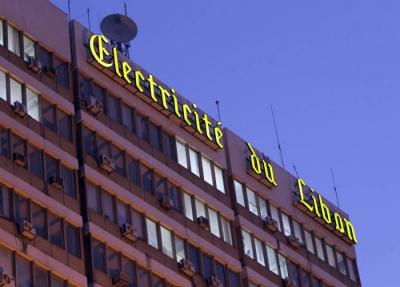The Ministry of Energy, along with all parties involved and the government that has "diluted" reforms, has trapped all Lebanese citizens in the "snare" of increased electricity tariffs. Aside from failing to increase supply hours, the electricity bill will rise by 24 times, even if power plants are shut down and the country plunges into darkness. Once citizens "swallowed" the bait of tariff hikes under the guise of increased supply, the Ministry of Energy backtracked on its promise to provide electricity for 8 to 10 hours daily. The excuse given by Minister Walid Fayyad is that "the amount that the Central Bank can secure to purchase fuel has decreased from 600 million dollars to 300 million, which is half." Consequently, "the available amount will not ensure more than approximately 4 hours." The minister's justification is "worse than the sin." If the relationship between state administrations regarding strategic issues affecting citizens' interests is managed with such procrastination, it is problematic. If Minister Fayyad has based his plans on projections, the issue is even greater. In either case, the citizen, who hoped to escape the generator bill, should not bear the consequences of this unproductive chaos caused primarily by the disastrous failure in managing the energy sector.
**Fixed Costs Increase by 24 Times**
At the beginning of 2023, the Electricité du Liban (EDL) will start issuing bills based on the new tariff, and citizens will have to pay the highest bill for the worst service ever. Most consumers with a 15-amp meter will pay 235,650 LBP monthly even if they consume no kilowatt. The new electricity tariff maintained the fixed meter fee and rehabilitation charge. The meter fee has been raised from 4,800 LBP to 21 cents per 1 amp, which amounts to 3.15 dollars for a 15-amp meter. Additionally, the rehabilitation charge has increased from 5,000 LBP to 4.5 dollars. Both fees, like consumption, are calculated based on the currency exchange rate. Thus, the consumer will pay a fixed tax on the electricity bill amounting to 7.65 dollars according to the current rate of 30,800 LBP, whether electricity is available or not.
**No Justice in Tier Distribution**
As for the tariff calculated based on 27 cents per kilowatt-hour for consumption exceeding 100 kilowatts, the situation is even worse. This tariff is first conditional on the state paying the accumulated bills estimated at over 245 million dollars. If the state does not pay this amount, the tariff for consumers will be calculated at 37 cents per kilowatt-hour. The new plan to increase the tariff has undermined the principle of expanding the tiers and increasing their number to ensure the greatest possible justice among citizens. Unlike the previous tariff, which was distributed across 5 tiers, the new plan includes only two tiers separated by the 100-kilowatt threshold.
**Electricity Prices Follow Currency Exchange Rates**
The new tariff is calculated based on the currency exchange rate set currently by the Central Bank at 30,800 LBP per dollar. However, the exchange rate could double if the black market rate exceeds 70,000 LBP, which is not unlikely given the negative developments that are increasingly weakening the currency. This practically means that the fixed tariff will rise by 48 times, while the variable tariff linked to consumption for the category consuming between 100 and 300 kilowatts will increase by about 400 times. With the increase in salaries in the sector and the potential lifting of bank withdrawals from foreign currency accounts next February, the increase in electricity prices is considered catastrophic.
**Decline in Investments**
Given these price levels, investments will decline, especially in sectors that require intensive energy. Even if we accept for argument's sake the retention of professions and businesses, the cost of electricity will be added to the product, and the final consumer will bear the cost.
**Repeating Treasury Loans**
The Energy Ministry's trick did not fool citizens, as it also deceived officials who agreed to lend or guarantee the purchase of fuel. The sporadic supply hours, which will not exceed four hours, cannot cover the cost of buying fuel, aside from the fixed electricity expenses, which were previously estimated at around 800 million dollars annually, and the expectation of increased non-technical losses (theft). Consequently, the Central Bank will have to pay the amount instead of guaranteeing it, and it may use mandatory deposits and Lebanese citizens' pockets to cover imported fuel costs amounting to 300 million dollars. This amount will thus be added to the treasury advances granted to the electricity sector over the past decade, which accumulated a deficit exceeding 45 billion dollars.
**Stifling Competition**
All these challenges stemming from the lack of serious intentions to reform the energy sector have hindered opportunities for opening the sector to competition. Thus, the move from state monopoly in generation, transmission, and distribution to allowing the private sector to produce electricity in large quantities and feed it into the grid is obstructed. This could facilitate electricity provision first, and potentially selling at lower prices with better service.
**High Costs of the Plan**
While the cost of implementing the electricity plan in Lebanon, which is supposed to generate slightly over 3,000 megawatts, reaches 5.7 billion dollars, providing Europe with 2,000 megawatts of Egyptian electricity will only cost 2.7 billion dollars. The European Union is funding the construction of the Euro-African electricity interconnection project, which will come into effect in 2024.




